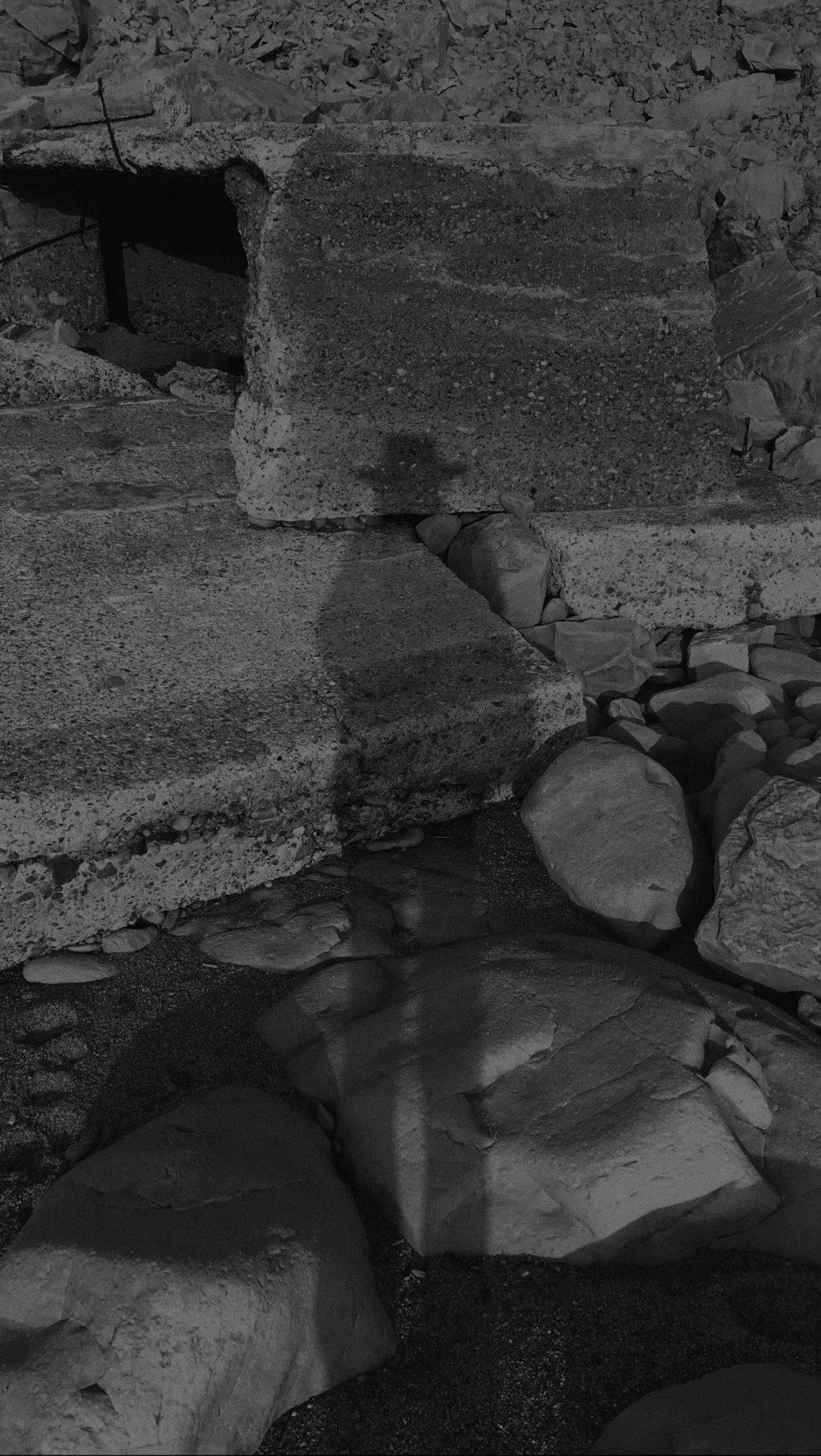Conceiving Cliffs
« Je parle de pierres plus âgées que la vie et qui demeurent après elle sur les planètes refroidies, quand elle eut la fortune d’y éclore. Je parle des pierres qui n’ont même pas à attendre la mort et qui n’ont rien à faire que laisser glisser sur leur surface le sable, l’averse ou le ressac, la tempête, le temps. »
"I speak of stones older than life which remain after her on the cooled planets, when she had the good fortune to hatch there. I'm talking about the stones that don't have to wait for death and have nothing to do but let the sand, the downpour, the storm, the surf and time slide over their surface." - Roger Caillois, French author and philosopher (1913 - 1978)
I became interested in the rocks we pass by every day when I realised the life they would continue to lead once we were gone. How if we did destroy ourselves, the likelihood that they would remain. Long before us and long after.
Then I took a palaeoecology class and learnt more about the quiet behemoths we walk by on the beach and forest, unaffected. How they are extraordinarily formed and changed, and the ways they can remain the same for millions to billions of years.
Werner Herzog’s fascination with both rocks and one of their creators, volcanoes, further mesmerised me (see ‘Into the Inferno’ and ‘Fireball’). Through his coverage of geological phenomena Herzog draws light to the tension between the scientific and spiritual.
Drawing monoliths
This tension was clear when I met my dear friend and talented artist Marynn Letemplier. She spends many hours a week walking, sitting, standing on the beaches around Biarritz, France, drawing the monoliths that stick out of the sea here. Careful not to get stuck at high tide when the beach is engulfed by the water.
In biting wind, sun and often gloom, Marynn sketches the never-ending shades of grey, the crevasses and cracks in a way that suggests deep knowing, like a lover or a mother. This comes from much time spent watching, but also time spent learning.
Both art and science provide not just complementary but connected avenues to better understand the often-overlooked everyday aspects of our natural world. These are the parts of our walks, drives and daydreams that by simply looking brighten our day, but that we take for granted.
Appreciating aesthetics
Some believe that the aesthetic value of nature is its only intrinsic value. Whether you agree or not, it’s fair to say that the aesthetic value of both art and nature is based on their ability to give satisfaction. The power to make someone content.
In the book ‘The Appreciation of Nature, Art & Architecture’, Allen Carlson argues that most of our aesthetic experience encompasses nature rather than art, through grand displays like mountains and sunsets, as well as the more ‘mundane’ like patio gardens and views from our window.
Carlson discusses how understanding what we are appreciating is essential to having an appropriate aesthetic experience, and scientific knowledge of nature can enhance our appreciation of it, instead of denigrate it.
MUSEUM OF ROCKS
This concept led Marynn and I to visit the local geology museum, to find out about the contents and history of the cliffs I admire and rocks she draws. We learnt how the Iberian and European tectonic plates collided 50 million years ago and the resulting slow changes that gave birth to the Pyreness and Bay of Biscay.
“This story is inscribed on the cliffs that erosion constantly alters, with few landscapes so deeply marked by their geological history,” read the poetic museum signage.
Equally interesting was the history of human impact on these geological formations. The museum explained how the introduction of paid holiday leave in the 1930’s caused the greatest damage, pushing houses, hotels and shops onto the cliffs. Sea level rise and increased extreme weather events are also washing away the cliffs, with some parts expected to be all but gone over the next decade.
Deep knowing
Understanding both the human impact and natural history undoubtedly increased our appreciation for these rocks. On the drive home we watched the coastline in awe of the life it had lived, its power to satisfy even more profound.
This deeper knowing can translate into art practice too, with one way of knowing involving using materials made from our natural subjects. Marynn has been trying this out, experimenting with sustainably harvesting local elements to draw her monoliths. From making charcoal sticks from a friend’s tree’s nearby, to learning about how to paint with clay from the cliffs.
Agriculture, architecture, and many indigenous art practices have long used materials that are local and familiar to us to create a greater sense of belonging to the spaces we inhabit. It’s thought that the embodiment of place can deepen the emotional relationship between people and nature, by helping us take notice of the details and connections of both.
Embracing circularity
By taking the time to understand our everyday encounters with nature through a circular practice - connecting material, subject and context – we can combine art and science to inform each layer of knowing, and thus appreciation.
Hopefully through this kind of deep appreciation for our natural world we can foster greater respect and care, and we’ll remain with the rocks.
To quote my local geology museum “understanding the world of the [area] allows you to better appreciate it and learn how to preserve it by walking along the coastal path.”




